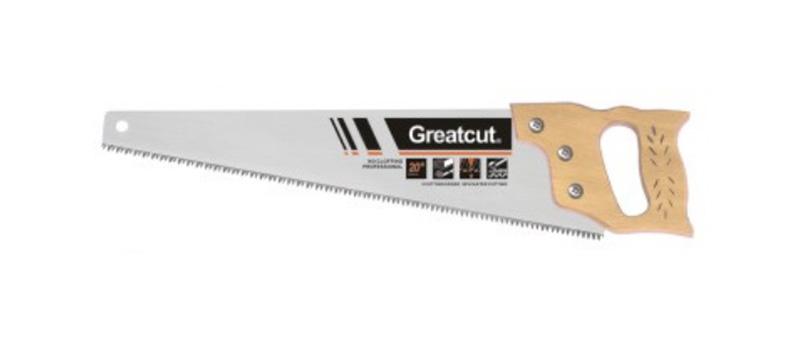Using hand saw tools effectively requires more than just selecting the right saw - proper technique makes the difference between frustrating struggles and satisfying, accurate cuts. Whether you're a beginner learning basic woodworking or an experienced craftsperson refining skills, these fundamental methods will improve your results with hand saw tools.
The starting position significantly impacts cutting accuracy with hand saw tools. For most cuts, position yourself so your dominant eye aligns with the cut line, giving you the best perspective for following markings. When using larger hand saw tools like crosscut or rip saws, stand with your feet shoulder-width apart for stability, allowing your arm to move freely through the cutting motion.
Proper grip and stance affect control when using hand saw tools. Hold the saw handle firmly but not tightly - excessive tension leads to fatigue and wandering cuts. For Western-style push saw hand saw tools, position your index finger along the handle's side to help guide the blade. With Japanese pull saw hand saw tools, a more vertical grip often works better to utilize the pulling action effectively.
Starting the cut properly prevents the blade from jumping or wandering. For hand saw tools with finer teeth (like back saws), create a small notch at the cut line with a knife or chisel to establish an exact starting point. With coarser hand saw tools, use your thumb as a guide against the blade for the first few strokes until the kerf is established. Applying light downward pressure on the initial strokes helps the teeth engage properly.
The cutting motion varies among different hand saw tools. For general crosscut saws, use long, smooth strokes that utilize the full length of the blade. With rip saw hand saw tools, a slightly more aggressive motion works well to remove material efficiently. Precision hand saw tools like dovetail saws require shorter, controlled strokes for accuracy. Regardless of saw type, let the tool do the work - forcing the cut leads to wandering blades and rough results.
Body positioning contributes to straight cuts with hand saw tools. Keep your elbow aligned with the cutting plane rather than sticking out to the side, which can cause the blade to angle unintentionally. For vertical cuts, position your body so you can look directly down the cut line as you work. When making long cuts with hand saw tools, periodically check from multiple angles to ensure you're maintaining the proper course.
While power tools dominate modern woodworking, mastering hand saw tools provides fundamental skills that translate to better results with all cutting operations. The control and understanding gained from working with these traditional tools builds a woodworker's foundation for quality craftsmanship.
